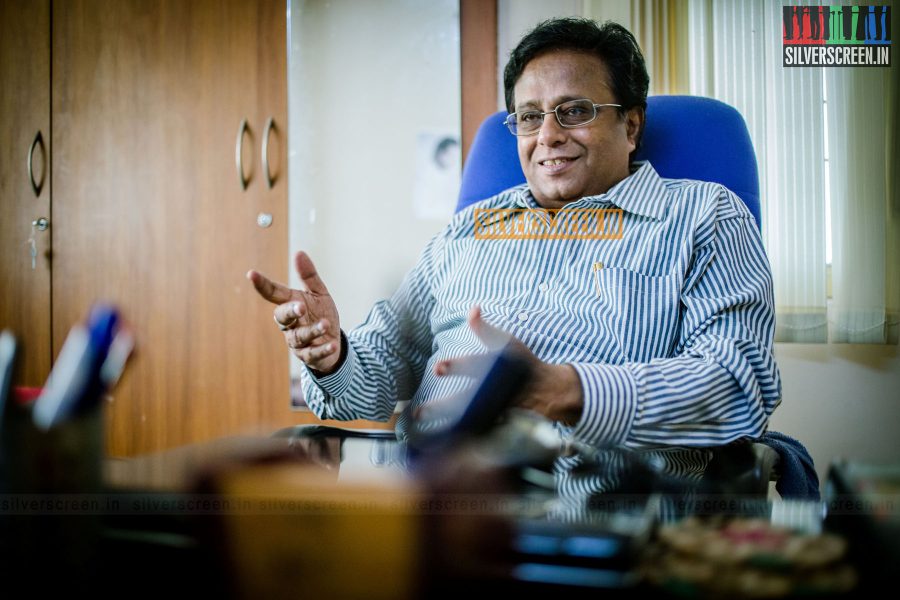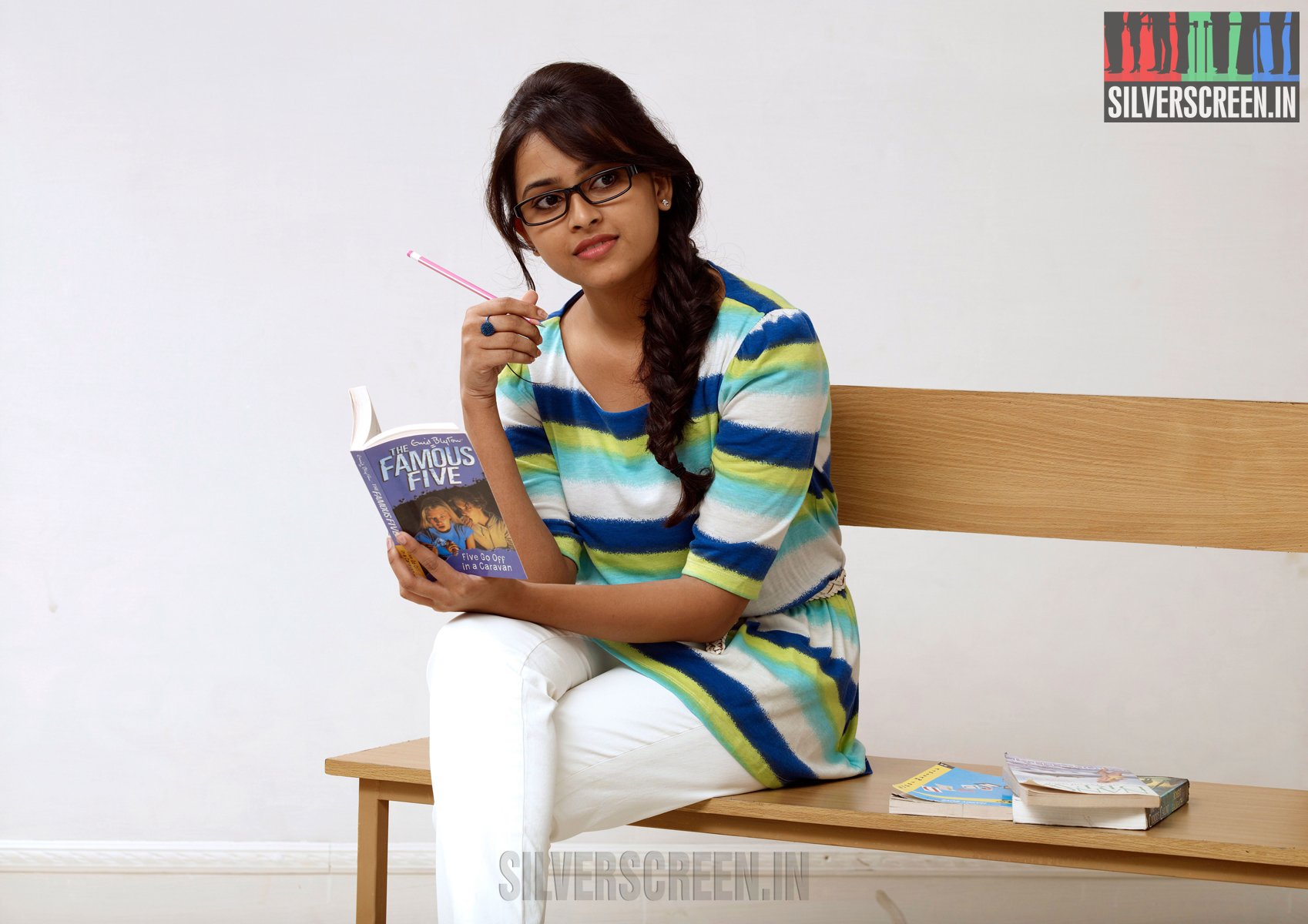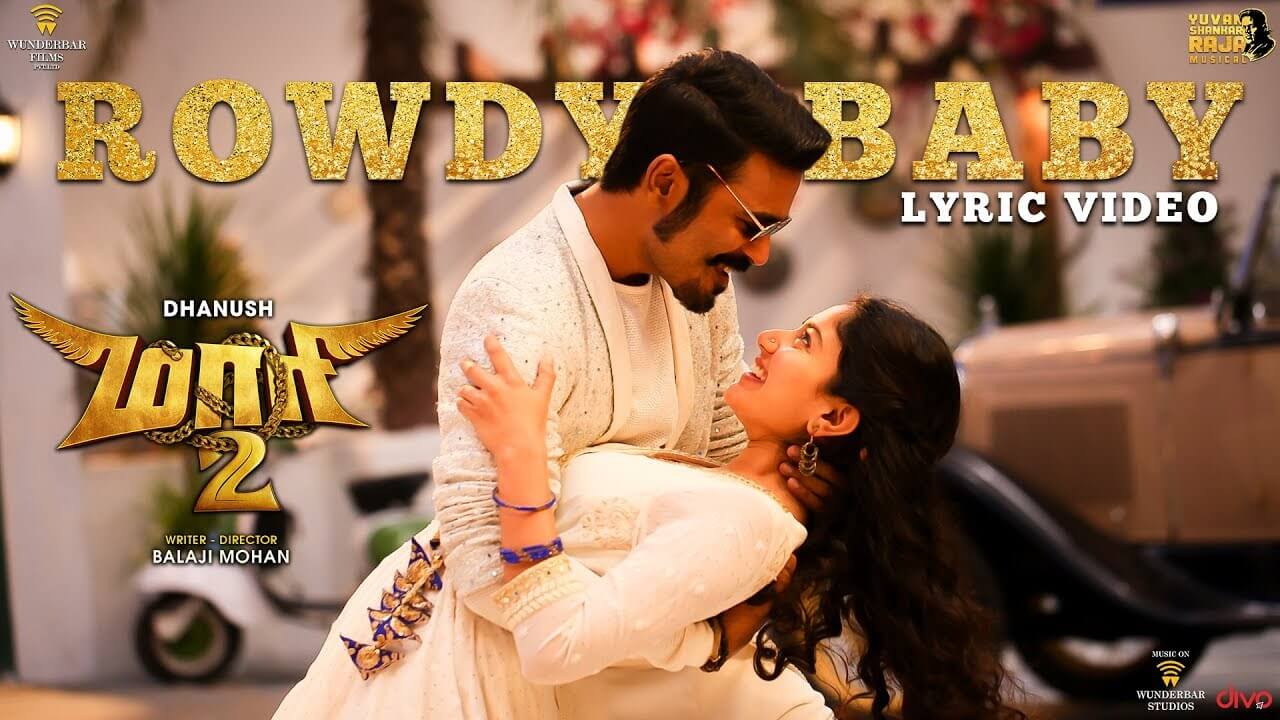When I hunted down director Rajeshwar last November, it was to talk about the late director C Rudhraiya. Rajeshwar was in a hurry, but he still managed to recount his experiences writing Rudhraiya’s Aval Appadithan while providing me with some rare tidbits about him.
I was intrigued enough to call him back again. For an exhaustive interview; on subjects both personal and professional.
He is silent when I tell him the agenda.
Clears his throat.
Then,
“Could you call me back again?”
It takes a few phone calls before he is convinced. I am given an appointment.
*****
The day before our meeting, I panic. Precious little background material is available about the filmmaker online. I only have a Wikipedia page to rely on. And, his films.
But Rajeshwar’s movies, I later realise, offer a definitive sketch of the director. Aval Appadithan, Panneer Pushpangal, the National Award winning Ezhavathu Manithan, Meendum Oru Kathal Kadhai, Kadalora Kavithaigal… they quite eloquently describe the man who wrote them.
*****
Rajeshwar’s office is a fuss-free apartment. A laptop and some stationery on his table. On the wall, a photograph of his son – who’ll soon be debuting in the Tamil remake of Ajab Prem Ki Ghazab Kahani. [quote align=’right’]”Even in the so-called progressive films of Balachander or Sila Neragalil Sila Manidhargal of Jayakanthan, the chastity of women is preserved sacredly. In Balachander’s Arangetram, Lalitha becomes insane with guilt.“[/quote]
Clad in a formal grey outfit, Rajeshwar walks in laden with bags. He offers a faint smile, which would stay through the interview.
When we settle, he hands me a little booklet. It resembles a photo album, featuring basic information about the director and his body of work. I rifle through the little booklet, as the roar of the air-conditioner fills the silence.
*****
Dr Karunanidhi’s note to Rajeshwar makes me smile. Working on Nyaya Tharasu was a satisfying experience, it says.
“En ezhuththu thuraiyilum idhu oru pudhiya thiruppam. Enakku mikka mananiraivaana thiraikkaaviyam Nyaya Tharasu.”
That’s definitely saying something. The movie was Rajeshwar’s directorial debut, a remake of the Malayalam film Panchagni. Karunanidhi wrote the screenplay for the Tamil version.
As I rifle through the booklet, he starts narrating the the story of his life.
His father was an exporter in Mumbai, and also a filmmaker. So Rajeshwar’s childhood and school years were largely spent in Mumbai and Tirunelveli. Avan Amaran (1958) was his father’s first film. It was appreciated by communist leader Jeevanandham for “being revolutionary in its own right”.
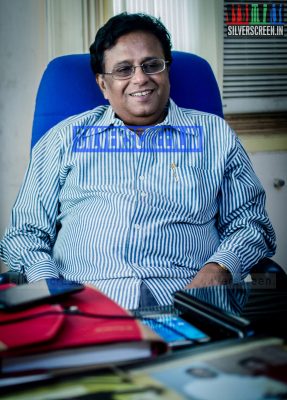
rajeshwar2
Amaran, the blockbuster directed by Rajeshwar, was a tribute to his father. “It was a conscious decision to name it after his film,” he says.
Even as a student, Rajeshwar remembers sharing his father’s love for celluloid, and harboured a dream to work in cinema.
But he didn’t know what he wanted to become: a writer, director or producer.
*****
Meanwhile, Rajeshwar continued devouring films. He moved to Chennai from Tirunelveli, enrolled in Loyola College, and studied Economics. His friends always sought him out during college festivals; Rajeshwar penned skits and stage plays that they found “good and tolerable”.
Soon, his passion for cinema and writing took him to the Institute of Film Technology, Adyar.
And, when he later branched out as a filmmaker, he recognised a dearth of writers who could match his “taste and temperament.” This was when he tried his hand at writing again. “There are a lot of great writers in the North; writers with a literary background. Tamil cinema hasn’t got many,” he says.
Quite like his friends in college, his fellow students at Adyar Film Institute were intrigued by Rajeshwar’s writing. Floored by a two-page synopsis that he wrote for a story, Rudhraiya, who was his senior at the institute, converted it into Aval Appadithan.
Word spread. Filmmakers learnt that Rajeshwar was a treasure trove of stories. He started receiving myriad requests from his friends to write for their films.
And just like that, while searching for good writers, Rajeshwar ended up becoming one. “Because, my friends became directors. And they wanted my stories,” he laughs heartily.
*****
Most of his movies happened quite by chance. During an impromptu discussion, he had narrated the story of two convent students coming of age to Gangai Amaran. Moved by the tale, Gangai Amaran wondered if he could make a film out of it with directors P Vasu and Santhana Bharathi at the helm. “I gave the story to them out of friendship,” says Rajeshwar. Paneer Pushpangal, starring Suresh and Shanthi Krishna was well received. [quote align=’right’]”I was told that if Aval Appadithan were made today, it would be a blockbuster. I don’t agree, for it’s still taboo for a woman to talk about her sexual encounters. The profile of the audience should change.”[/quote]
Rajeshwar then met Pratap Pothen on the sets of Paneer Pushpangal, in which Pratap played an integral role. “When I direct a film, you will write the story,” he had told Rajeshwar. Pratap kept his word when he came up with the National Award winning Meendum Oru Kathal Kathai; a film about a mentally challenged couple played by Radhika and Pratap himself. Rajeshwar had earlier made a short film called Anbagam, on mentally-challenged children. That experience, he says, came in quite handy.
*****
Despite writing stories and screenplay for his friends’ films, Rajeshwar firmly believed that his core competence was direction. “Writing was supplementary. Though I handled various aspects of cinema, I wouldn’t call myself multi-faceted. I would be happy if I excel at that one thing I choose to do,” he declares.
As a writer and director, Rajeshwar had explored different genres; from thriller to romance. And as a cinephile, he says he also loves watching all kinds of films. “I like Godard as much as I like MGR’s films. I change my mind-set based on the movies that I watch. I don’t use intellect when I analyse an MGR film.” He also enjoys the work of Satyajit Ray among other filmmakers. “When you like cinema, you simply like it. There’s a different parameter for every genre.”
******
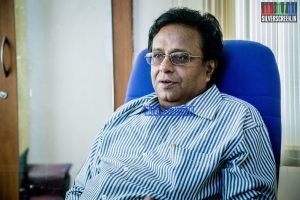
rajeshwar3
His films, Seevalaperi Pandi and Kovilpatti Veeralakshmi were based on real life characters. However, several scenes in the films were fictional, explains Rajeshwar. “The movies might be based on real people, but they were not biographies. The characters and incidents are embellished to make the movie more interesting. So, Oila, an important character in Seevalaperi Pandi was richly embroidered.
Rajeshwar also quotes Veerapandiya Kattabomman as an example. The fort that was ruled by the real Kattabomman was built on an area that measured only about four to six grounds, he says. “And that Palayam had only 10 streets, 300 hundred years ago. But in the film, Kattabomman’s palace looked as enormous as a Jaipur palace. Likewise, we choose to exercise some freedom.”
*****
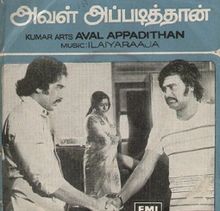
AvalAppadithan1
“But literature is the central repository. A filmmaker will understand characters and complex situations through greatest minds. If you want to understand a pimp, a prostitute, and a fallen woman, you have to read Jayakanthan, Tolstoy, and Dostoyevsky. Reading illuminates the mind.”
A filmmaker must know his audience, Rajeshwar observes. According to him, there are three types. “A) The one that reacts to the film at a sensory level. They simply see and hear. They are happy with an elementary storyline. Their IQ level is low. 75% of the audience belong to this category.”
The theory applies to international cinema too, he opines. “What kind of films become blockbusters? Spiderman and Jurassic Park.” he asks rhetorically. “Those are called ‘Vittalacharya-films’ here. The movie-literacy level of this group is very low.”
Directors CV Sridhar, Bhimsingh and Bimal Roy catered to ‘Group B’. “The works of these directors speak to the audience’s heart. They tap their sentiments. Bharathiraja’s and K Balachander’s movies too fall under this category,” he says. The last group comprises films that were made by filmmakers like Satyajit Ray. “They engage with the mind.”
“A filmmaker should be clear about his target,” says Rajeshwar. The financial viability of a project is also determined based on who receives the movie. “If a film is made for the majority of the audience, then one can play with the budget. But if it is experimental, it has to be limited. Those who can afford to produce a film regardless of the return can explore. The Government could also provide funding based on the merit of the artistes.”
******
Rajeshwar, who has been observing Tamil cinema for long, reckons that films have gone through “cosmetic changes.” But content-wise, the industry hasn’t kept pace. “It might even go worse. I was told that if Aval Appadithan were made today, it would be a blockbuster. I don’t agree, for it’s still taboo for a woman to talk about her sexual encounters. The profile of the audience should change.” [quote align=’left’]”I often state that writers should be paid 2 to 2.5 percent of a film’s budget. But writers are neither paid well nor respected well. They are the first ones to be forgotten.”[/quote]
Also, the films that had initially seemed progressive succumbed to societal beliefs. “Even in the so-called progressive films of Balachander or Sila Neragalil Sila Manidhargal of Jayakanthan, the chastity of women is preserved sacredly. In Balachander’s Arangetram, Lalitha becomes insane with guilt.”
Rajeshwar points out that Telugu and Tamil fans worship the stars. “Does that happen in Kerala and Bengal? Literacy, social and political consciousness reflect on art. Art is the reflection of culture.”
But, a filmmaker’s success lies in the way he works within, and manipulates the established boundaries, he says. “Directors make a lot of compromises, I do too. However, filmmaking is a business. We have to get our investment back. Rudhraiya made two films. The second one bombed, and he couldn’t make another one for 35 years.” Even when a film is made in a conditioned environment, the creative freedom won’t be curbed, he observes.
*****
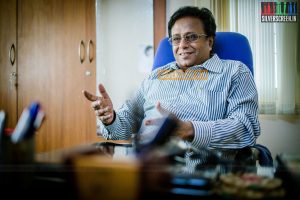
rajeshwar1
“It took me about 10 years to complete Kovilpatti Veeralakshmi. And when it released, there were mixed reactions. Critics panned it.” But Rajeshwar isn’t the one to take criticism seriously. “Firstly, there are no critics like Roger Ebert here. Some still write reviews using phrases like, “olipadhivu kulkuluvena irundhadhu!”But I do take some into consideration. And I was slightly low after the release. Commercial fallout of the film did affect me.”
But he had always been hopeful.
And, it paid off. For around that time, a friend introduced him to Rajkumar Santhoshi. Over dinner at Taj, the duo discussed cinema and books for hours. Rajeshwar was invited by Rajkumar to join him in Mumbai if he had a story to spare.
Rajkumar, who had been making films with big stars, was advised by Rajeshwar to make one with upcoming artistes.
“I wish you could become a brand yourself,” Rajeshwar had told him.
“You give me a script. I will make one,” was Santhoshi’s response. And that’s how, Ajab Prem Ki Ghazab Kahani took shape. The premise was based on a Telugu movie, Soggadu, but Rajeshwar wrote it afresh for Santhoshi.
Rajeshwar has now written the script and the songs for the Tamil remake, which will be directed by one of his sons.
*****
Besides writing and direction, Rajeshwar has also been busy translating Vairamuthu’s songs into English. He was introduced to Vairamuthu by Bharathiraja, with whom Rajeshwar had worked on scripts and story discussions. “I learnt the nuances of commercial cinema from the discussions I had with Bharathiraja,” he recalls. [quote align=’right’]”We are influenced by Hollywood cinema. They have limited their idiom because of the works of Aristotle, Plato, and Shakespeare. Their tradition of storytelling is different. They practice separate methods for a musical, comedy, tragedy, and drama.”[/quote]
When Bharathiraja’s Muthal Mariyathai was nominated for the National Award, he wanted Vairamuthu’s songs translated into English for the jury. The responsibility was entrusted to Rajeshwar.
Vairamuthu and Bharathiraja bagged the National Award for the film. “My bond with Vairamuthu strengthened, for the songs fetched him the first National Award,” says Rajeshwar, who translated over 200 songs penned by Vairamuthu, including the ones that brought him six National Awards.
*****
Rajeshwar vehemently disagrees with the recent opinion that songs are redundant, and that they interrupt the narrative. He believes that filmmakers fail to use them cleverly. “We are influenced by Hollywood cinema. They have limited their idiom because of the works of Aristotle, Plato, and Shakespeare. Their tradition of storytelling is different. They practice separate methods for a musical, comedy, tragedy, and drama.”
Our storytelling technique stems from Koothu, he explains. “Theatre was born out of Koothu and cinema was born out of theatre. Songs are integral to our stories. Our way of storytelling is a gift to world cinema.” We should not be guilty to convey a story through dance and music, says Rajeshwar.
“Film songs, when properly used, become sub-text to the story. It makes the audience understand the philosophical side of the characters.”
Nenjil Or Aalayam is a flat drama without songs, he continues. “But Sonnadhu Nee Dhaana and Ninaithathellam act like undercurrents. We understand the characters’ state of mind well. Could there be a better climax than the song Kelviyin Nayagane for Aboorva Ragangal?”
*****
2015 will be a busy year for Rajeshwar. Besides the Tamil remake of Ajab Prem Ki Ghazab Kahani, he plans to film G Nagarajan’s novella Naalai Matrum Oru Nale. He has written the script and aims to send it to the Cannes Film Festival.
Rajeshwar will also join Blue Ocean Film and Television Academy (run by G Dhananjayan in association with Satyabhama University), as the Head of Script Writing.
His book on screenplay writing is also ready to be published. The book features key inputs that Rajeshwar has gathered out of his own experiences and from the works of other masters. “In the foreword, I have mentioned that one must understand the difference between news and a story. News, when it is well sculpted, becomes a story. A story, when it is badly sculpted, becomes news,” he laughs.
Rajeshwar strongly believes that writers in Tamil cinema are not recognised enough. “I often state that writers should be paid 2 to 2.5 percent of a film’s budget. But writers are neither paid well nor respected well. They are the first ones to be forgotten.”
He pauses and adds as an afterthought, “Until recently, so many people didn’t know that I was the writer of Aval Appadithan and Paneer Pushpangal. I had to print something like this,” he says, pointing at the booklet.
“Unless I win an award or attend events, I won’t be remembered. Tell me who wrote Pasamalar and Veerapandiya Kattabomman?” he shoots a rhetorical question. “It is hard for us to get noticed.”
*****
Rajeshwar delivers the last gem for the day when I ask about his path ahead.
Never be stagnant.
“When someone tells me, ‘’Andha kaalathula, sir…,’ the very phrase suggests that he is stuck in the past,” Rajeshwar laughs.
“As long as my mind is sharp and I am able to connect with current trends, I will continue to make films. I will not be sceptical about the changes, but be abreast of them.”
What about Ridley Scott, Steven Spielberg, and Clint Eastwood? He questions suddenly. “Aren’t they making films? Rajeshwar is still young at heart,” he tells me in third person.
Rajeshwar chuckles when he tells me this. And suddenly, becomes quite cheerful. His sombre mood lifts. I relish good humor, he says, and narrates a comedy that he plans to make.
It’s a hilarious story. When I laugh, he makes a suggestion. “Read Woody Allen’s Getting Even. You will laugh your head off!”
*****
Before I pack up, I ask him about how Somasundareshwar became Rajeshwar.
I listen to another tale.
Recommended
“When Bharathiraja was shooting Muthal Mariyathai, he chanced upon an ad of a film called Thaye Neeye Thunai, directed by Somasundar.”
A chagrined Bharathiraja, who mistook Somasundar for Somasundareshwar, was a little miffed with his friend for making a film without informing him. “I told him I would never direct a film like that,” he laughs again. To avoid more confusion, Bharathiraja then advised him to change his name.
So, retaining ‘Eshwar’ from his given name, Somasundareshwar added the prefix ‘Raj’.
And this time, he answers on cue sensing my question.
First, a bright smile.
Then,
“Because Raj Kapoor has been a great inspiration, you know!”
*****
The Rajeshwar interview is a Silverscreen exclusive.
